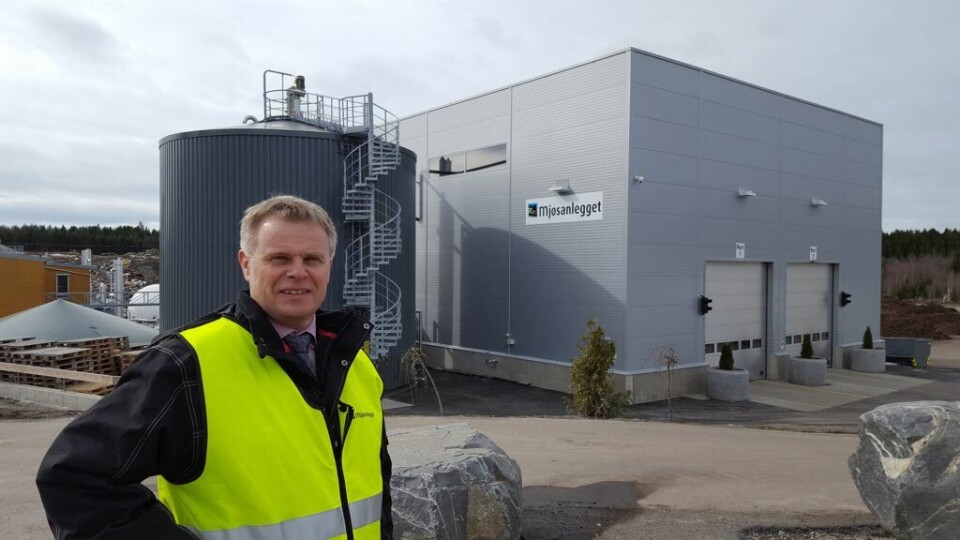
Biogas plant looks at salmon as a fuel of the future
Mortalities are an unfortunate fact of life and death in animal husbandry, and fish farming is no exception. But a biogas producer in Norway believes fish farming morts are a valuable resource that can help power and heat the country’s homes.
With 1.5 tonnes of fish silage, an average apartment can be supplied with energy for approximately five months. The Mjøsanlegget biogas plant in Lillehammer wants to receive more fish silage from the industry to contribute to Norway’s shift towards green energy.
The following article, written by Elin Scott, of marketing agency Market Leaders, and Linn Solli, a researcher at research institute NIBIO, explains why fish mortalities offer opportunity.
Every year, approximately 50 million salmon die in Norwegian fish farms for various reasons. This constitutes a large amount of offal, which can be used for the production of biogas, which in turn can be used as fuel, or to produce energy in the form of heat and / or electric power, and as fertiliser.
NIBIO researcher Linn Solli’s doctoral degree deals precisely with the production of biogas from morts and off-cuts from the fishing industry.
Experiments have shown that by mixing about 15% fish silage with cattle manure in a biogas reactor, the methane yield will be doubled, and a large part of the organic content in the silage will be converted to biomethane.
Reduced emissions
Biomethane can replace fossil energy sources. In recent years, anaerobic decomposition (decomposition of biomass without oxygen) and biogas production have gained increased focus, especially because the process is a way of reducing climate emissions. The biogas process is carried out by a complex microbial community, and causes complex organic compositions (protein, fat and carbohydrate) to be broken down into the gases methane (60%) and carbon dioxide (40%) plus other end compounds such as hydrogen sulphide, fatty acids and inorganic, plant-available nitrogen (ammonium).
Biomethane, which is a renewable, energy-rich gas can to a certain extent replace natural gas (non-bio methane) and a number of other fossil energy sources for heating, fuel and production of electricity. By capturing biomethane in a reactor, and using it for, for example, vehicle fuel, emissions of fossil carbon can be reduced.
“The biogas process is therefore beneficial in that it treats organic residues, reduces carbon emissions, produces energy and mineralises nutrients,” says Solli.
Energy-rich fish silage
For profitability in a biogas plant, high methane yield is an important factor. Offal from fish has a high content of fat and protein and is therefore energy-rich with a high methane potential. Compared with carbohydrate, fat and protein provide approximately 2.5 and 1.5 times more methane.
High content of fat and protein added in biogas reactors will in other words give increased methane yield, but the microbes are dependent on access to carbohydrate in addition to protein for growth and activity.
“The energy-rich fractions are therefore best suited as a biogas substrate when treated with other substrates. Treatment of protein- and fat-rich waste with, for example, cattle manure or other, less energy-rich and carbohydrate-based substrates, has been shown to provide stable biogas processes, and significantly increased methane yields,” Solli explains.
Good gas potential
The Mjøs plant converts food waste from the surrounding municipalities into wet manure, compost and gas, and wants to receive more fish silage to convert into biogas.
“It is first and foremost to contribute to the green shift that we want to accept fish silage,” says Tom Werven from the Mjøs plant.
“These are products that contain a lot of fat and proteins and they therefore have a good gas potential. We think it is important to take care of the opportunities that exist in the fish industry for waste fractions, which can contribute to the production of fossil-free fuel for all types of vehicles. For example, a car that uses 0.5 litres of petrol / mile can be driven approximately 11,000 km on methane gas produced from 1.5 tonnes of fish silage mixed with manure.”
1,613 apartments
Solli has made some calculations and concludes that one tonne of substrate with 15% fish silage mixed with livestock manure has a potential of approximately 435 kilowatt hours. An average apartment uses around 9,000 kilowatt hours per year.
A typical biogas plant may use 5,000 tonnes of fish waste a year. This gives approximately 14.5 million kilowatt hours / year, and it will cover the need for 1,613 apartments or 726 detached houses.
* The use of fish for energy has also been explored by the Scottish Salmon Company, which provides raw material for the Creed Integrated Waste Management Facility near Stornoway.
And SSC’s parent company, Bakkafrost, turns process waste from salmon and dairy farms into fertiliser and renewable energy at its Förka biogas plant on the Faroe Islands, providing electricity to 1,900 homes.























































